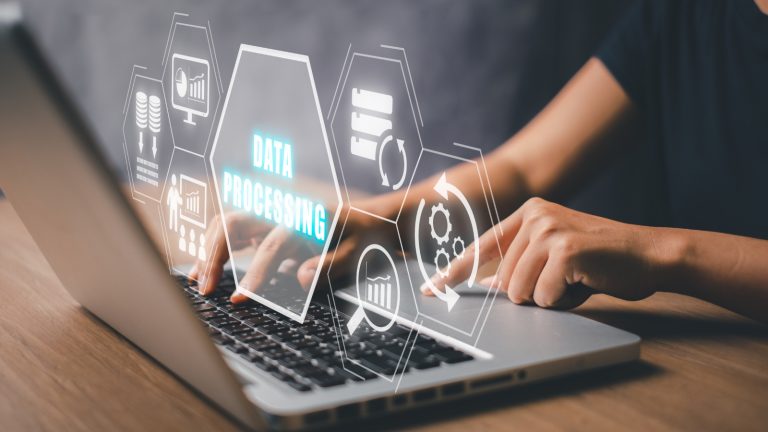In the rising kingdom of AI, Natural Language Processing (NLP) is simultaneously growing as one of the most transformative technologies. If you look into the NLP applications, you will be able to see that it just dominates through its strengths by supporting machines to understand, interpret data as it is and finally generate human language. What else is more ubiquitous in both business and daily life, right? Offering new avenues when it comes to personalisation, efficiency and automation, it is at the top of the game with virtual assistants to healthcare analytics.
In this article, we will walk you through the top 8 Natural Language Processing (NLP) applications, giving a glimpse of some real-world examples along with industry relevance and emerging trends. Along the way, we will be touching on the subdomains such as named entity recognition (NER), machine translation, automatic speech recognition (ASR), sentiment analysis, and more of them as we expect to offer a 360-degree understanding of NLP’s impact today.
We will reveal
- What are Natural Language Processing (NLP) Applications?
- Bonus NLP Applications – Emerging Use Cases
- Challenges of NLP Applications
- Future Trends in NLP Applications
- Cerexio Solutions through Natural Language Processing Applications
- Making a Digital Wave through Natural Language Processing Applications
- FAQ about Natural Language Processing
What are Natural Language Processing (NLP) Applications?

Chatbots and Virtual Assistants
Did you know that among the most widely used Natural Language Processing (NLP) applications, virtual assistants and chatbots receive the top position?. Since the said intelligent systems come to the market with some advanced transformer models (for NLP) and pre-trained language models, they easily understand users’ intent, and that knowledge helps them provide human-like responses.
How NLP Powers Conversational AI
Chatbots have embedded digital strengths such as semantic parsing and word embedding. Because of that, they can interpret the context of user inputs and smoothly recognise entities. Not only that, but they also have the capacity to maintain coherent dialogues. Let us give you an example of this. Think about how customer service platforms help you with resolving queries automatically. Due to this, it helps reduce workload and response times.
Enhancing Customer Service Automation
Many dominating businesses in today’s world are using chatbots when automating FAQ handling and for appointment scheduling. Plus, you can see that most of today’s businesses use this approach for troubleshooting as well. The best part comes with the integration of content recommendation systems. The reason being, it provides personalised responses and brings up user engagement.
Voice-Activated Assistants
You may already have experience with the popular assistants such as Siri, Alexa, and Google Assistant. But did you know that they use technology named automatic speech recognition (ASR) when converting spoken language into text? This is followed by natural language generation (NLG), and it simply presents accurate responses. Also, edge implementations, known as edge NLP (on-device NLP), are there in the picture to pave the way for some processing directly on smartphones and IoT devices, guaranteeing that it offers privacy and low latency.
Sentiment Analysis and Opinion Mining
Sentiment analysis is a centric NLP application which businesses mainly utilise. They apply this when they are in need of monitoring and analysing public opinion. The latter is able to evaluate text from reviews, social media, or any sort of surveys. Due to that, NLP systems can separate positive, negative, or neutral sentiments and lay the basis for marketing and strategic decisions.
Monitoring Social Media Sentiment
Companies nowadays tend to keep a track of brand perception through sentiment analysis models. Since their power gets augmented when coupled with pre-trained language models and transformer models (for NLP), these models can understand nuances like sarcasm or contextual sentiment without much effort.
Market Research with NLP
NLP-powered systems are primarily good for analysing product feedback or survey responses. This can also extract trends with information extraction techniques, which means it can support modern businesses to arrive at data-driven decisions with minimal manual effort.
Financial Sentiment Analysis
You may have heard that popular banks and investment firms employ various techniques to make predictions on their market reactions. Sentiment analysis is one of those technologies that helps them in earning calls, monitoring news, and gaining social media mentions in that journey. It comes along with text classification to be able to flag risks and identify opportunities efficiently.
Machine Translation
Among classic NLP applications, machine translation is popular as a technology that builds a bridge to take away language barriers. In many modern systems, you may have seen that the developers have used a technology named neural machine translation. This is powered by transformer models (for NLP) and pre-trained language models when expecting highly accurate translations.
Neural Machine Translation (NMT)
Machine translation basically relies on word embedding. It powers the systems to understand semantics across different languages. Further, Semantic space (Wikipedia) representations are in the picture to help the system map words from one language to the other.
Real-Time Translation Apps
Popular tools like Google Translate or Zoom’s real-time translation feature present one of the best NLP applications in live communication. Using this, your businesses can interact with global clients without limitations. It is recommended for travellers as it can navigate foreign languages effortlessly.
Global Business Localisation
Have you ever thought about how some organisations localise their content quickly while also maintaining context and style? The secret lies in the hands of data-to-text generation in different languages.
Text Summarisation
Text summarisation comes to the surface to fulfil the objective of reducing lengthy documents into concise, meaningful insights. This couples with other NLP applications like extractive and abstractive summarisation to offer the best possible outcome.
Extractive Summarisation
In this method, the system selects key sentences from text using semantic parsing and information extraction. This is popular for news aggregation or legal briefings.
Abstractive Summarisation
In this pectrum, natural language generation models move ahead to generate summaries in natural, human-like language. This is where the systems utilise tools like grammar checking tools to ensure output clarity.
Use Cases in News and Legal Documents
In the real world, you will find that many media outlets and law firms use NLP when they summarise contracts, reports, and research papers efficiently. It combines the strengths of legal document analysis and contract review, extracting key clauses automatically.
Speech Recognition and Voice-to-Text
Automatic speech recognition (ASR) is another most-talked-about NLP application in digital devices. You can see it ranges from smartphones to enterprise systems.
Automatic Speech Recognition (ASR)
With pre-trained language models and transformer models (for NLP), the systems have the potential to convert spoken words into text. It also paves the way for transcription, voice commands, and several accessibility features.
Voice Command Systems
In your cars, smart homes, and other personal devices, there is edge NLP (on-device NLP). This helps processing voice commands locally, and reduces latency while keeping privacy in NLP operations very tight.
Transcription for Business and Healthcare
In 2025, you witness that numerous hospitals and enterprises deploy computational phenotyping (healthcare NLP) when they analyse patterns, transcribe patient notes, and improve diagnostic accuracy. On the other hand, some automated transcription systems are in a position to support meetings and interviews.
Information Extraction and Named Entity Recognition (NER)
In the context of turning unstructured text into structured data, two technologies take the centre stage, such as Named entity recognition (NER) and information extraction.
Identifying Entities in Text
NER is the technology that identifies locations, names, dates, organisations, and more. When fused with semantic parsing, these NLP systems have the capacity to tag documents accurately for downstream applications.
Building Knowledge Graphs
You can rely on information extraction if you expect to create structured databases from research papers, articles, or any sort of contracts. This is quite vital for AI-driven search and analytics.
Contract and Document Analysis
There are some powerful tools like legal document analysis as well as contract review that are born through NLP applications, and they are good for spotting risks, extracting key terms, and analysing compliance information efficiently.
Text Classification and Document Tagging
Text classification is another powerful NLP application that is specifically designed with the purpose of categorising content, emails, or tickets.
Email Filtering and Spam Detection
NLP systems have the punch to classify emails via text classification models. This signifies the ability to separate spam from other important messages.
Topic Classification
You can always facilitate automatically tagging of research papers, articles, and forums using word embedding and semantic space models.
Personalised Content Recommendations
You may have come across some content recommendation systems, and they completely rely on NLP to match users with relevant videos, articles, or products. That is how virtual assistants or chatbots offer you personalised suggestions.
Natural Language Generation (NLG)
Natural language generation is the digital power that supports your computers to produce human-like text from structured data. This is undoubtedly one of the most innovative NLP applications ever. Do you agree?
Automated Text Generation
In today’s fast-moving digital world, you can see that companies tend to generate their reports, marketing copies and blogs using pre-trained language models, transformer models and data-to-text generation techniques.
Data-to-Text Applications
It is NLG that domains like healthcare, finance, and logistics use when converting complex datasets into readable narratives.
SEO Content Creation with NLP
Tools that mix with grammar checking tools help to generate content that is grammatically correct and surely optimised for search engines.
Bonus NLP Applications - Emerging Use Cases

Healthcare and Computational Phenotyping
Computational phenotyping (healthcare NLP) is designed to screen patient text, speech, and records to detect diseases accurately and early.
NLP in Legal and Contract Analysis
Legal document analysis or contract review tools are on the surface of the business landscape as they are outstanding in extracting deadlines, essential clauses, and other relevant obligations automatically.
Explainable NLP
The growing field of explainable NLP gives the promise that AI decisions are fair, transparent, and interpretable, which takes away the bias in NLP models.
Challenges of NLP Applications

Data Privacy and Security – It has become a challenge to safeguard privacy in NLP when there is sensitive information.
Bias and Fairness – Keeping bias in NLP models at bay for ethical AI is also a concern.
High Computational Costs – It is indeed problematic, as some advanced transformer models demand high-end resources.
Language and Domain Limitations – As many AI experts express, they find it challenging to function through low-resource languages and niche jargon.
Future Trends in NLP Applications

- Multimodal NLP – This is the ability to fuse text with video, images, and audio.
- Real-Time Streaming NLP – It will offer live automatic speech recognition (ASR) along with sentiment tracking.
- Edge NLP – This talks about on-device processing when preserving privacy.
- Explainable NLP – Developing transparent and interpretable models for critical decision-making is rising.
- Pre-trained Language Models – This indicates continually evolving models to maximise efficiency and accuracy.
Cerexio Solutions through Natural Language Processing Applications

Cerexio presents or Industry 4.0-powered MES (Manufacturing Execution System) and WMS (Warehouse Management System), which couple with Natural Language Processing applications to make your manufacturing smarter.
What do Cerexio Solutions Bring to Your Table?
Since Cerexio solutions are developed with NLP applications, they can comprehend operator queries and create important production to logistics reports automatically. Our solutions have the potential to summarise your production data and analyse feedback from your machines or workers.
What are the Benefits of Cerexio’s NLP-Powered Software Solutions?
With NLP power, Cerexio helps convert your manufacturing company’s complex data into easy-to-read insights. Our solutions support in predicting maintenance needs, and they simply enhance inventory decisions. As a result of this, you will receive faster responses, fewer errors, and more efficient operations.
All capabilities through one comprehensive AI-driven language understanding. Call for a free demo today!
Making a Digital Wave through Natural Language Processing Applications

Are you still doubting your business success? Why don’t you try a new digitalised path with NLP applications? By understanding clearly and making use of these NLP applications at the right time, your business can surely outsmart in the increasingly AI-driven world within a short time.
Just Make the Digital Wave with NLP.
FAQ about Natural Language Processing
NLP works walking on several steps. For example, first it cleans and tokenises text, then looks over its grammar and structure (parsing). As the next step, it works with techniques like word embedding to understand meaning. At the final phase, it applies machine learning to perform tasks varying from translation, text classification, or automatic speech recognition (ASR).
Some popular NLP applications are known to be sentiment analysis, which means detecting opinions, information extraction to pull out names, dates, etc., machine translation to translate languages, virtual assistants, chatbots, and natural language generation (NLG) in order to auto-generate text.
NLP encounter a variety of challenges, such as bias in NLP models, which means training data might reflect unfair stereotypes and some privacy concerns in NLP. This comes into play especially when processing sensitive data, and the most visible challenge is the high computational cost of large models.
Popular NLP tools are the Natural Language Toolkit (NLTK), which facilitates everything from parsing to tokenisation and named entity recognition (NER). Other libraries based on transformer models also shine for special tasks like text classification and semantic parsing.
Rule-based NLP depend on grammar, handcrafted rules, and linguistic knowledge, while Statistical NLP counts on data when learning patterns. The rule-based systems are known to be interpretable, while statistical NLP, especially coupled with deep learning, scales better and adapts to new data quickly.
